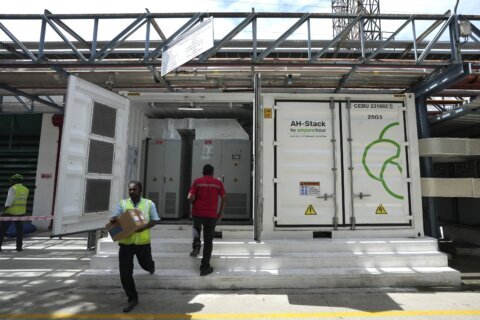Mortgage rates rose for the fourth consecutive week, with the average rate of a 30-year fixed mortgage surpassing 7% once again. Both fixed and adjustable mortgage rates climbed significantly during February as economists reacted to mixed data on inflation, the labor market and the possibility of a recession.
Here are the current mortgage rates, without discount points unless otherwise noted, as of March 2:
— 30-year fixed: 7.07% (up from 6.96% a week ago).
— 20-year fixed: 7.02% (up from 6.93% a week ago).
— 15-year fixed: 6.29% (up from 6.21% a week ago).
— 10-year fixed: 6.43% (up from 6.31% a week ago).
— 5/1 ARM: 5.68% (up from 5.54% a week ago).
— 7/1 ARM: 5.84% (up from 5.67% a week ago).
— 10/1 ARM: 6.09% (up from 6% a week ago).
— 30-year jumbo loans: 7.12% (up from 6.98% a week ago).
— 30-year FHA loans: 6.2% with 0.05 point (equivalent to 6.2% a week ago).
— VA purchase loans: 6.32% with 0.05 point (up from 6.28% a week ago).
[Read: Best Mortgage Lenders.]
“Lower mortgage rates back in January brought buyers back into the market. Now that rates are moving up, affordability is hindered and making it difficult for potential buyers to act, particularly for repeat buyers with existing mortgages at less than half of current rates.”
— Sam Khater, Freddie Mac’s chief economist, in a March 2 statement
With mortgage rates again past 7%, the housing market has taken a relatively unexpected turn for the worse. While homebuying activity saw a boost in January as rates dipped, the reverse has already begun to happen as rates gained about a half-point during February. Mortgage applications plummeted to a 28-year low last week, according to the Mortgage Bankers Association.
As Khater says, there’s little incentive for homebuyers to enter the market now, whether they’re first-time buyers or current homeowners looking to sell. Recent research from Goldman Sachs found that 99% of outstanding mortgages have a rate that’s below what’s available today. That means almost all homeowners in America would need to buy a home at a higher rate than what they already have if they plan to sell.
It’s disheartening news for the real estate market ahead of the typically busy spring homebuying season. Mortgage rates were widely expected to retreat during this time, with some forecasters suggesting that rates would fall below 6% in the spring and summer. But to determine whether 7% rates are here to stay, all we can do is wait for the February consumer price index report to be released later this month to see where inflation stands — and what the Federal Reserve may decide to do next.
[Compare: Mortgage and Refinance Rates in Your Area.]
Indicator of the Week: A Home Price Correction Can’t Offset 7% Rates
Prospective homebuyers have begun to see relief in recent months as dwindling demand has caused home prices to stabilize and even drop in many regions. Home values are up nationally 5.8% year over year, according to the Case-Shiller Home Price Index, which is a dramatic slowdown from the more than 20% growth rate seen in early 2022.
“Looking at the spring homebuying season, the big question on shoppers’ minds is centered on how much further will prices adjust to compensate for the elevated borrowing costs and lagging incomes,” says George Ratiu, senior economist at Realtor.com. “The short answer — in light of declining sales — seems to be that there is still room for further downward price adjustments.”
Of course, the one part of the longer answer is that it depends on where buyers are located. Housing prices have already fallen in many expensive coastal markets such as San Francisco and Seattle, bringing affordability more into balance with wages. But some resilient metros in the South, including Miami and Atlanta, are still experiencing double-digit price appreciation.
And the much longer, more complicated answer is that home prices would essentially have to crash to compensate for the elevated borrowing costs brought on by higher mortgage rates. For perspective, home values have been dropping steadily since July 2022, amounting to about a 4.4% price decrease during the six-month period since then. However, home prices would need to decline by roughly 30% to bring monthly payment affordability back to where it was amid last year’s rates.
Here’s the math: The monthly principal and interest payment on an average-priced home ($365,000, with a 20% down payment) at today’s mortgage rates would be nearly $2,000, and that’s before accounting for property taxes, insurance and homeowners association fees. Just a year ago when rates were hovering around 4%, the payment on a home that price would be closer to $1,400. And to achieve that same payment at current mortgage rates, you’d have to cut the purchasing price to $260,000. It’s highly unlikely that any house originally priced at $365,000 would drop in value by $105,000 given the inventory challenges with many current homeowners reluctant to sell.
And still, the answer continues: The harsh reality is that mortgage rates will likely never fall as low as they did during the pandemic to sub-3% levels. That was an anomaly caused not only by the Fed’s near-zero benchmark rate, but also due to the central bank’s larger monetary policy of buying up mortgage-backed securities to stabilize the housing market in 2020. Unless there’s another unforeseen crisis like the COVID-19 pandemic, mortgage rates are not likely to reach those record-low levels again.
The takeaway is that future homebuyers and sellers will have to temper their expectations by understanding that a 2.65% mortgage rate isn’t really a fair comparison when it comes to housing affordability. While mortgage rates are still expected to fall during the course of 2023, they’re more likely to stay in the 5% to 6% range. Combined with a reasonable drop in home prices that’s also expected this year, homeownership will become more affordable for many Americans — but it may never be as affordable as it was in the early days of the pandemic housing boom.
[Calculate: Use Our Free Mortgage Calculator to Estimate Your Monthly Payments.]
More from U.S. News
2023 Mortgage Forecast: Rates Expected to Decline
Mortgage Rates Surge as Inflation Lingers
Mortgage Rates Rebound to Nearly 7%
Mortgage Rates Soar Past 7% Once Again originally appeared on usnews.com







